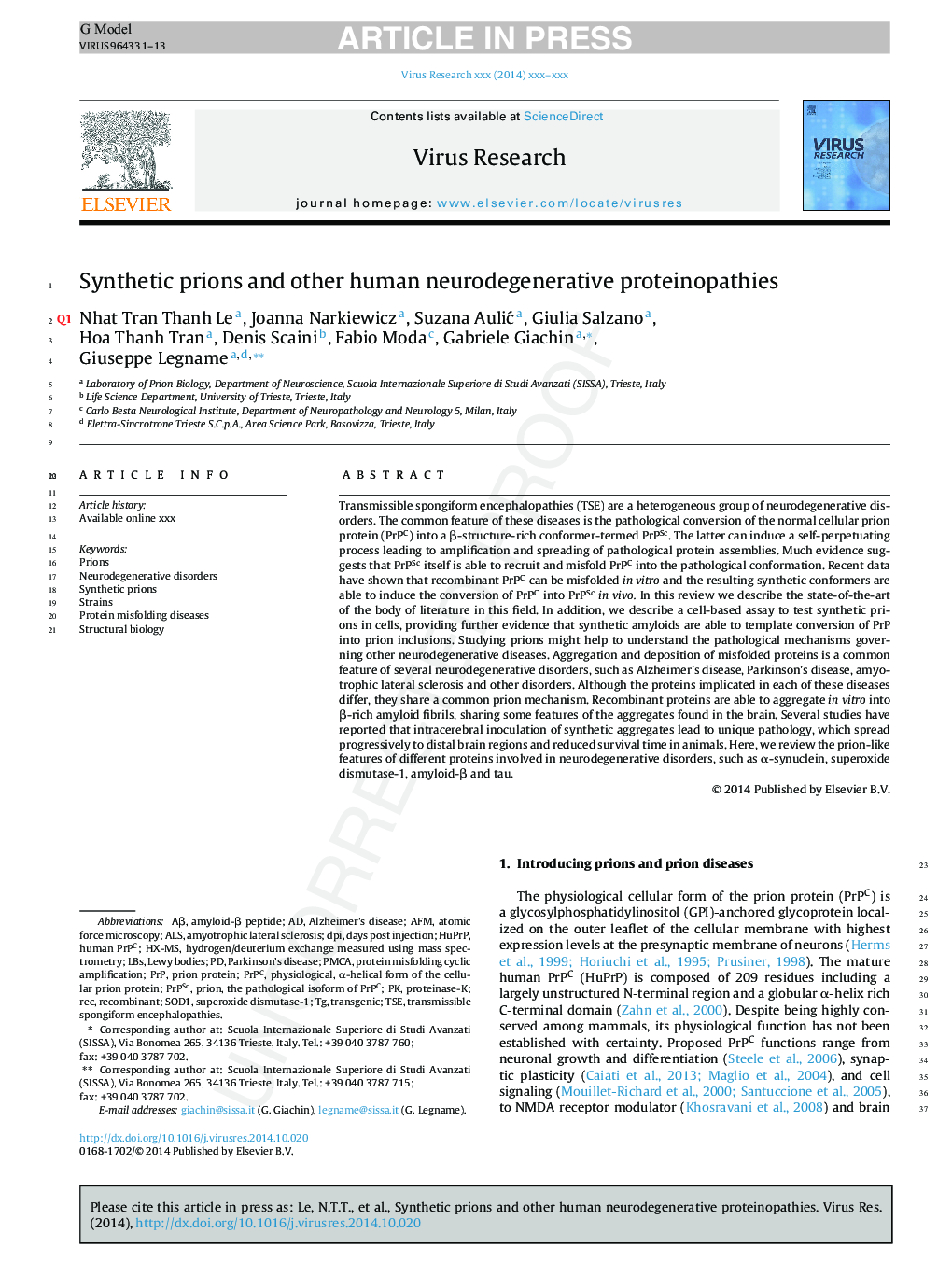| کد مقاله | کد نشریه | سال انتشار | مقاله انگلیسی | نسخه تمام متن |
|---|---|---|---|---|
| 6142174 | 1594350 | 2015 | 13 صفحه PDF | دانلود رایگان |
عنوان انگلیسی مقاله ISI
Synthetic prions and other human neurodegenerative proteinopathies
ترجمه فارسی عنوان
پین های مصنوعی و سایر پروتئین های پپتیدهای انسانی انسان
دانلود مقاله + سفارش ترجمه
دانلود مقاله ISI انگلیسی
رایگان برای ایرانیان
کلمات کلیدی
AFMHX-MSPrPscPrPcSOD1TSEPrPPMCALBSDPIrecAβNeurodegenerative disorders - اختلالات نوروژنیکamyotrophic lateral sclerosis - اسکلروز جانبی آمیوتروفیکTransmissible spongiform encephalopathies - انسفالوپاتی های اسپگوماییک قابل انتقالRecombinant - بازسازی کنندهLewy bodies - بدن لویAlzheimer's disease - بیماری آلزایمرALS - بیماری اسکلروز جانبی آمیوتروفیکParkinson's disease - بیماری پارکینسونProtein misfolding diseases - بیماریهای غلط پروتئینTransgenic - تراریختهProtein misfolding cyclic amplification - تقویت سیکل ناپایدار پروتئینstructural biology - زیست شناسی ساختاریSuperoxide dismutase-1 - سوپراکسید دیسموتاز-1Strains - فشارهاatomic force microscopy - میکروسکوپ نیروی اتمیPrion protein - پروتئین پریونPrions - پریون هاamyloid-β peptide - پپتید آمیلیید ب
موضوعات مرتبط
علوم زیستی و بیوفناوری
ایمنی شناسی و میکروب شناسی
ویروس شناسی
چکیده انگلیسی
Transmissible spongiform encephalopathies (TSE) are a heterogeneous group of neurodegenerative disorders. The common feature of these diseases is the pathological conversion of the normal cellular prion protein (PrPC) into a β-structure-rich conformer-termed PrPSc. The latter can induce a self-perpetuating process leading to amplification and spreading of pathological protein assemblies. Much evidence suggests that PrPSc itself is able to recruit and misfold PrPC into the pathological conformation. Recent data have shown that recombinant PrPC can be misfolded in vitro and the resulting synthetic conformers are able to induce the conversion of PrPC into PrPScin vivo. In this review we describe the state-of-the-art of the body of literature in this field. In addition, we describe a cell-based assay to test synthetic prions in cells, providing further evidence that synthetic amyloids are able to template conversion of PrP into prion inclusions. Studying prions might help to understand the pathological mechanisms governing other neurodegenerative diseases. Aggregation and deposition of misfolded proteins is a common feature of several neurodegenerative disorders, such as Alzheimer's disease, Parkinson's disease, amyotrophic lateral sclerosis and other disorders. Although the proteins implicated in each of these diseases differ, they share a common prion mechanism. Recombinant proteins are able to aggregate in vitro into β-rich amyloid fibrils, sharing some features of the aggregates found in the brain. Several studies have reported that intracerebral inoculation of synthetic aggregates lead to unique pathology, which spread progressively to distal brain regions and reduced survival time in animals. Here, we review the prion-like features of different proteins involved in neurodegenerative disorders, such as α-synuclein, superoxide dismutase-1, amyloid-β and tau.
ناشر
Database: Elsevier - ScienceDirect (ساینس دایرکت)
Journal: Virus Research - Volume 207, 2 September 2015, Pages 25-37
Journal: Virus Research - Volume 207, 2 September 2015, Pages 25-37
نویسندگان
Nhat Tran Thanh Le, Joanna Narkiewicz, Suzana AuliÄ, Giulia Salzano, Hoa Thanh Tran, Denis Scaini, Fabio Moda, Gabriele Giachin, Giuseppe Legname,
